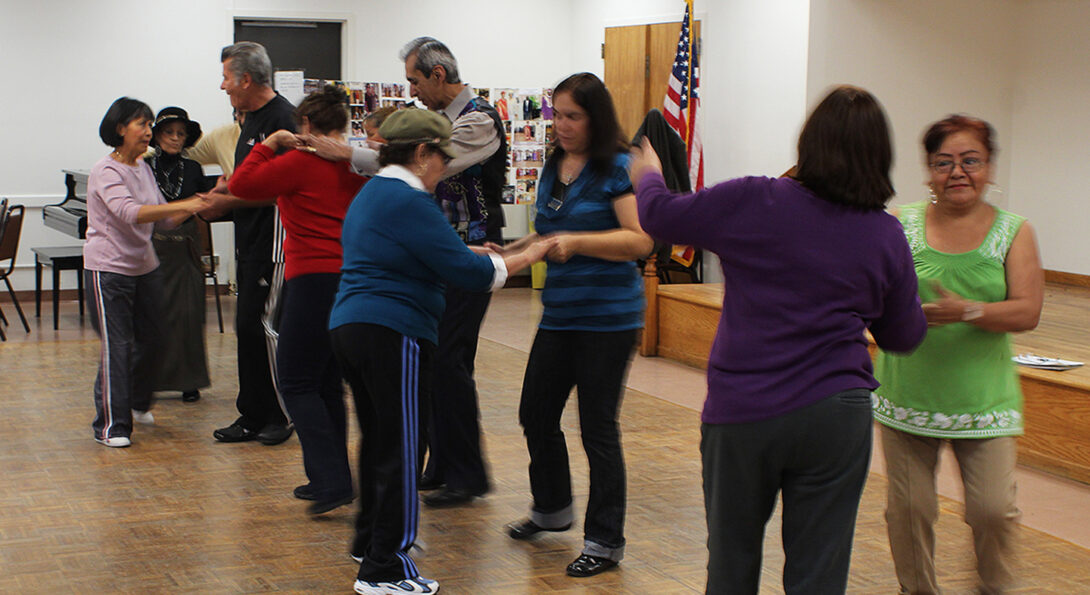Dance classes improve health for older Latinos

Introduction
Researchers in the UIC College of Applied Health Sciences found that a four-month dance program helped older Latino adults walk faster and improved their physical fitness—which could reduce their risk for heart disease.
Latinos ages 65 to 74 are much less likely than other seniors to participate in physical leisure-time activities, says David Marquez, associate professor of kinesiology and nutrition and director of the Exercise Psychology Lab.
They are twice as likely to report difficulty walking as non-Latino whites and develop symptoms of Alzheimer’s disease an average of seven years earlier, he adds.
Marquez and Latin dance instructor Miguel Mendez developed BAILAMOS, a dance instruction program designed for older adults. In the federally funded study with older Latinos, some participants took dance class twice a week for four months, while others attended health education classes.
Researchers outlined their findings at an American Heart Association scientific session. They reported that those who took dance classes walked faster and were more physically active during their leisure time than before they started dancing. Those in the health education classes showed smaller improvements in their fitness.
“There are many barriers older Latino adults face, and they are busy with caregiving and other responsibilities, so often physical activity takes a back seat and many times the opportunities are unavailable,” says Priscilla Vásquez, a doctoral student in kinesiology and lead study author. “This program engaged them on many levels, physically, culturally and emotionally.”
Marquez was recently appointed by the U.S. Department of Health and Human Services to serve on the 2018 Physical Activity Guidelines Advisory Committee. The committee will review current research for an update of the Physical Activity Guidelines for Americans, first published in 2008.